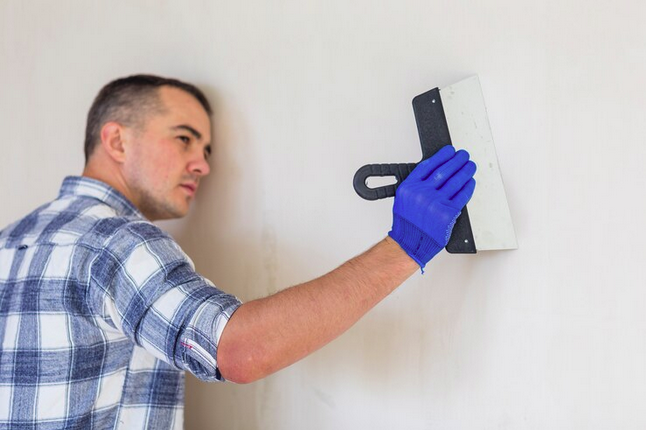Plasterboard Moisture Resistant: Preventing Costly Damage

In the ever-evolving world of construction and home improvement, the importance of plasterboard moisture resistant has become increasingly evident. This versatile building material plays a crucial role in protecting the structural integrity and long-term durability of our living and working spaces. This comprehensive guide delves into the world of moisture-resistant plasterboard, exploring its benefits, application strategies, and the pivotal role it plays in preventing costly damage.
Plasterboard, also known as drywall or gypsum board, is a widely-used construction material that offers a multitude of advantages, from ease of installation to aesthetic appeal. However, when exposed to excessive moisture, conventional plasterboard can become susceptible to a range of issues, including mold growth, warping, and structural degradation. This is where moisture-resistant plasterboard emerges as a game-changer, providing an effective solution to safeguard your spaces against the detrimental effects of water infiltration.
Understanding Moisture-Resistant Plasterboard
Moisture-resistant plasterboard, also referred to as “green board” or “water-resistant drywall,” is a specialized variant of the standard plasterboard. Designed to offer enhanced protection against moisture, these panels are engineered with a core that is less susceptible to water absorption and a water-resistant face paper or coating.
The key to the superior moisture resistance of these boards lies in their unique composition and manufacturing process. By incorporating specialized additives, reinforcing the core, and employing water-resistant surface treatments, moisture-resistant plasterboard is able to withstand exposure to humidity, condensation, and even limited water exposure, making it an invaluable asset in areas prone to moisture-related challenges.
Identifying Moisture-Vulnerable Spaces
Recognizing the areas within your living or working spaces that are prone to moisture exposure is the first step in implementing an effective moisture-resistant plasterboard strategy. These vulnerable zones can include bathrooms, laundry rooms, basements, and any other spaces that may experience high humidity, water splashing, or potential leaks.
By identifying these moisture-prone areas, you can strategically deploy moisture-resistant plasterboard to create a robust barrier against the detrimental effects of water infiltration. This proactive approach not only safeguards the structural integrity of your spaces but also helps to prevent the development of costly and potentially hazardous issues, such as mold growth and structural deterioration.
Applying Moisture-Resistant Plasterboard
Proper installation and integration of moisture-resistant plasterboard is crucial to ensure its effectiveness in protecting your spaces. Here are some key considerations when incorporating this specialized material into your construction or renovation projects:
Product Selection
Carefully selecting the right type of moisture-resistant plasterboard is essential. Look for panels that are specifically designed to withstand moisture exposure, often identified by terms such as “green board,” “water-resistant,” or “mold-resistant.”
Installation Techniques
Proper installation techniques are paramount to maximize the moisture-resistant capabilities of the plasterboard. This includes ensuring secure fastening, appropriate joint treatment, and the use of compatible sealants and tapes to minimize the risk of water infiltration.
Integrated Waterproofing
In areas with heightened moisture exposure, such as bathrooms and showers, integrating additional waterproofing measures, such as the application of specialized membranes or coatings, can further enhance the moisture protection provided by the plasterboard.
Maintenance and Repair
Regularly inspecting and promptly addressing any signs of moisture damage or compromise are essential to maintaining the long-term effectiveness of moisture-resistant plasterboard. Timely repairs and preventive maintenance can help to extend the lifespan of these protective panels and safeguard your spaces against costly water-related issues.
The Benefits of Moisture-Resistant Plasterboard
Investing in moisture-resistant plasterboard offers a multitude of benefits that extend far beyond just protecting against water damage. These advantages contribute to the overall durability, functionality, and value of your living or working spaces.
Structural Integrity Preservation
By shielding against the detrimental effects of moisture, moisture-resistant plasterboard helps to maintain the structural integrity of walls, ceilings, and other building components, reducing the risk of costly repairs or even structural failures.
Mold and Mildew Prevention
Moisture-resistant plasterboard is designed to inhibit the growth of mold and mildew, which can pose significant health risks and lead to extensive remediation efforts. This safeguards the indoor air quality and overall well-being of occupants.
Improved Longevity and Cost-Effectiveness
The enhanced moisture resistance of these specialized plasterboard panels extends the lifespan of your spaces, reducing the need for frequent maintenance, repairs, or premature replacement. This translates into long-term cost savings and a more sustainable investment.
Enhanced Property Value
Homebuyers and tenants often prioritize properties that have been constructed or renovated with moisture-resistant materials, as it signals a commitment to quality, durability, and attention to detail. Incorporating moisture-resistant plasterboard can thus enhance the resale value of your property.
Versatile Application
Moisture-resistant plasterboard can be utilized in a wide range of applications, from bathrooms and laundry rooms to basements and other moisture-prone areas, making it a flexible and adaptable solution for various construction and renovation projects.
Conclusion
Plasterboard moisture resistance is a critical consideration in the pursuit of creating durable, long-lasting, and healthy living and working environments. By understanding the unique properties of moisture-resistant plasterboard and strategically incorporating it into your construction or renovation projects, you can safeguard your spaces against the detrimental effects of water infiltration, mold growth, and structural deterioration.
Investing in moisture-resistant plasterboard is an investment in the overall well-being, longevity, and value of your property. As the demand for sustainable and resilient construction continues to grow, the importance of moisture-resistant plasterboard will only continue to increase.
By embracing the moisture-resistant advantage, you can transform your living and working spaces into havens of durability, health, and long-term cost-effectiveness. Whether you’re building a new home, renovating an existing property, or addressing moisture-related challenges in your commercial or residential spaces, the principles of moisture-resistant plasterboard can serve as a powerful tool in your pursuit of creating exceptional and resilient environments.







